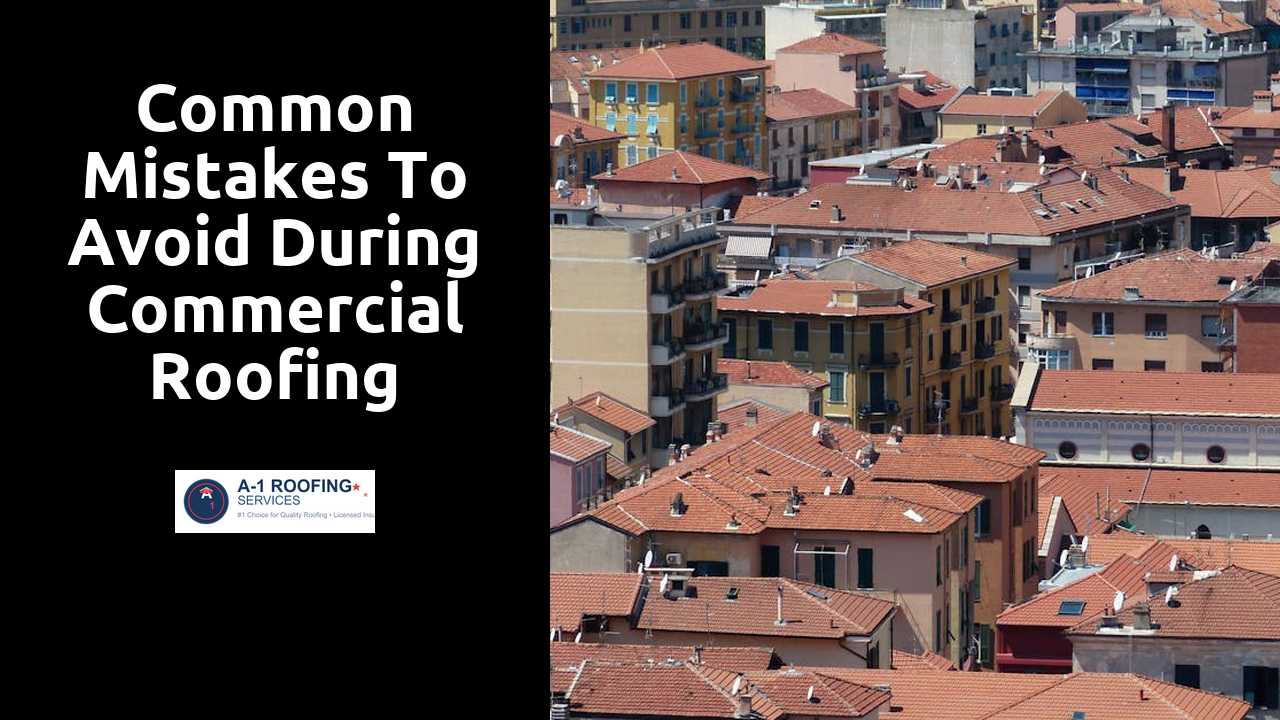
Common Mistakes to Avoid During Commercial Roofing Installation
Table Of Contents
Overlooking Roof Inspections
Before starting a commercial roofing installation, conducting thorough roof inspections is essential. These inspections help identify any pre-existing damage or weaknesses in the structure. Issues such as rotting materials, underlying leaks, or structural integrity problems can severely hinder the installation process if overlooked. Addressing these concerns early on saves time and expenses down the line and facilitates adherence to building codes.
Regular inspections also provide insight into the roof's drainage and installation needs. Understanding how water flows across the roofing system can help contractors make informed decisions about the materials and techniques to use. Failing to address inspection findings can lead to inadequate installation, ultimately affecting the roof's performance and longevity. Ensuring all aspects are accounted for strengthens the roof’s overall durability and reduces the likelihood of future complications.
Navigate to these guys for detailed information.
The Role of Inspections in the Installation Process
Regular inspections play a vital role in ensuring that a commercial roofing installation is completed successfully. They help identify potential issues before they escalate into major problems. This proactive approach not only saves time but also prevents costly repairs down the line. Inspectors examine various aspects of the roofing system, including materials and installation techniques, ensuring that everything adheres to building codes and manufacturer specifications.
These assessments provide an opportunity for contractors to address any shortcomings in real-time. During the installation process, inspections can confirm whether the roofing structure is sound, ensuring that the base is adequately prepared to support the new roof. Without these checks, small oversight risks turning into significant failures, jeopardizing both the roof's integrity and the building’s overall safety. Consistent monitoring fosters a transparent relationship between clients and contractors, instilling confidence in the completed project.
Ignoring Safety Protocols
Safety protocols are essential in any roofing project. Implementing these measures significantly reduces the risk of accidents and injuries on the job site. Workers should be equipped with personal protective equipment (PPE) such as hard hats, safety goggles, and harnesses. These precautions help protect against falls, debris, and other potential hazards commonly associated with roofing installations.
Training plays a crucial role in ensuring that every team member understands the importance of following established safety guidelines. Proper training sessions should cover equipment handling, ladder safety, and emergency procedures. A lack of adherence to these safety protocols can lead to severe consequences, both for the workers involved and for the overall integrity of the project. Prioritizing safety is not just a regulatory requirement; it is a fundamental aspect of responsible roofing practices.
Essential Safety Practices for Roofing Projects
Safety should always be a top priority during roofing projects. Workers must wear appropriate personal protective equipment (PPE) such as hard hats, harnesses, and non-slip footwear. Proper training in ladder safety and fall protection is essential to prevent accidents. Additionally, keeping the work site organized reduces the risk of tripping hazards. Regular safety briefings can reinforce the importance of these protocols and help maintain vigilance throughout the installation process.
Communication among team members is crucial for ensuring safety on the job site. Clear signals or walkie-talkies help coordinate activities, especially when heavy materials are being lifted or moved around. Establishing a designated area for tools and materials minimizes clutter and potential hazards. Encouraging a culture of safety where team members feel comfortable discussing concerns can greatly enhance overall job site safety. Meeting local safety regulations is also important for legal compliance and worker protection.
Skimping on Ventilation
Proper ventilation in a commercial roofing system is crucial to maintaining both the integrity of the roof and the comfort of the building's interior. Insufficient ventilation can lead to heat buildup and moisture accumulation, resulting in mold growth and structural damage over time. Without adequate airflow, businesses might face costly repairs that could have easily been avoided through proper planning and implementation. Additionally, poor ventilation can affect energy efficiency, leading to increased utility bills as HVAC systems work harder to compensate for temperature fluctuations.
Ensuring that a commercial roof has the right ventilation system is not just a matter of compliance with codes; it is essential for the longevity of the roof itself. Roofs that lack proper ventilation may experience accelerated deterioration, leading to sagging, cracking, or deformity. When designing the roofing system, it is important to incorporate features such as vents, fans, or a combination of both. This proactive step can enhance the lifespan of the roofing material, preserving the investment and fostering a stable, efficient working environment.
Why Proper Ventilation is Crucial for Longevity
Proper ventilation plays a significant role in the durability and health of a commercial roof. It helps regulate temperature and moisture levels within the roofing system. When a roof lacks adequate ventilation, heat and humidity can build up, leading to problems such as premature aging of materials. This can result in reduced lifespan and increased maintenance costs over time.
Inadequate airflow may also contribute to issues like mold growth or condensation, which can threaten the structural integrity of the roofing system. Effective ventilation systems allow hot air to escape and promote the circulation of cooler air. Ensuring proper ventilation can provide a more stable environment for roofing materials, ultimately enhancing performance and extending the overall life of the roof.
Related Links
Comparing Installation Techniques for Flat and Pitched Commercial RoofsEssential Tools for Successful Commercial Roof Installation